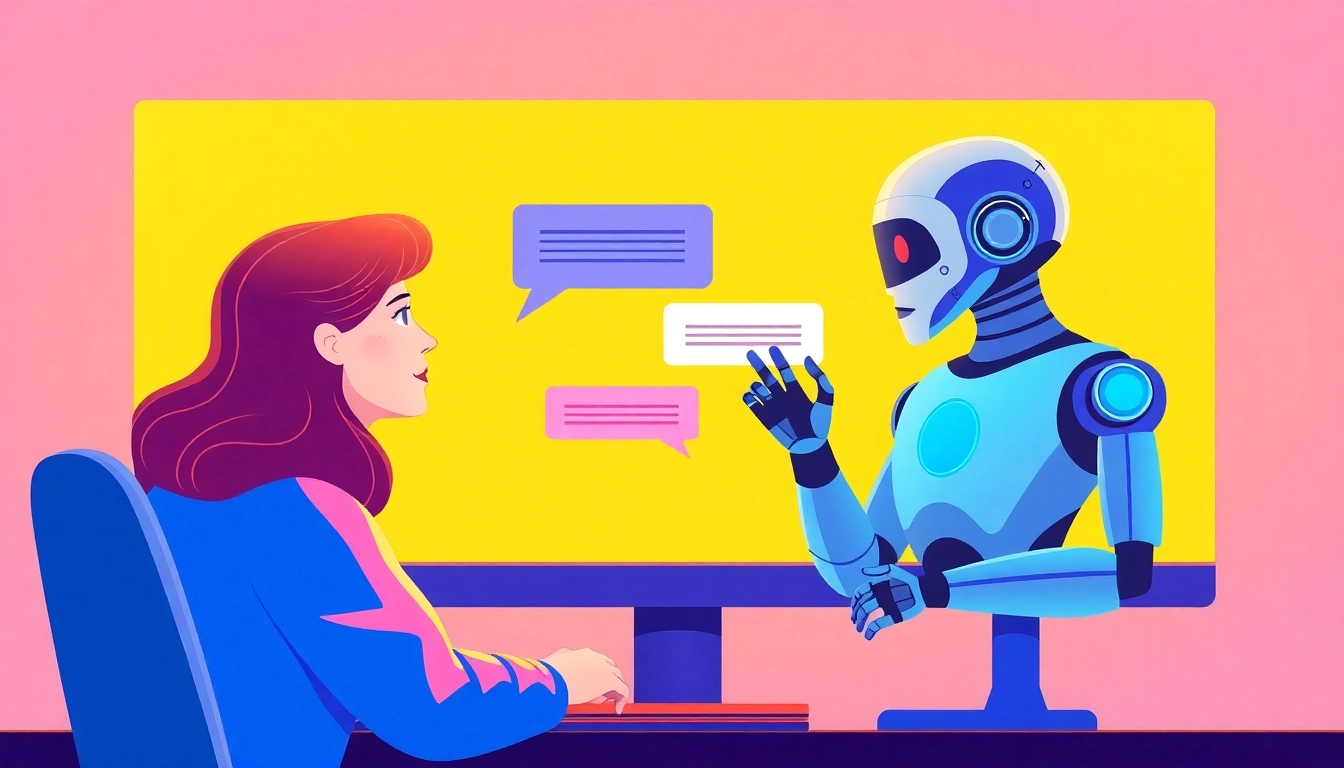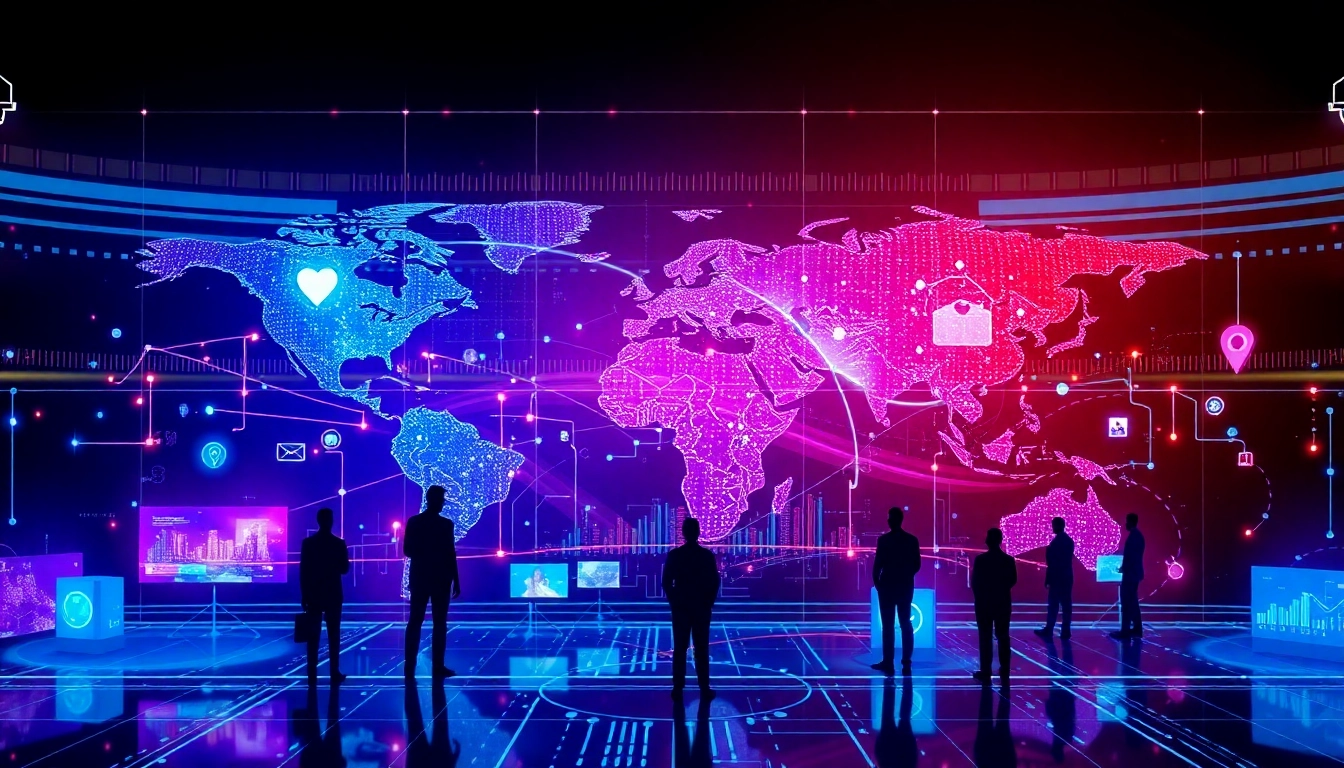Understanding the Human or Not Game: How It Works and Why It Matters
In an era where artificial intelligence (AI) continues to advance at an unprecedented pace, distinguishing between human and machine communication has become a fascinating, yet increasingly complex challenge. Enter the human or not game — an innovative social interaction challenge that tests your ability to identify whether you are conversing with a fellow human or a sophisticated AI. This game isn’t just about entertainment; it serves as a vital tool to explore the boundaries of machine intelligence, social perception, and the evolving landscape of human-AI interaction.
What is the Human or Not Social Interaction Challenge?
The human or not challenge is an interactive, real-time conversational game where participants engage in a two-minute chat with an anonymous entity—either a human or an AI-powered chatbot. After the interaction, their task is to determine who was behind the responses. The core premise is deceptively simple: use your intuition, critical thinking, and observational skills to accurately distinguish between human and AI responses. This game presents a controlled environment to assess how close AI has come to mimicking genuine human interaction.
This challenge was inspired by the classic Turing Test, developed by Alan Turing in 1950, which sought to assess a machine’s ability to exhibit behavior indistinguishable from that of a human. Modern adaptations like human or not leverage cutting-edge AI, including models like GPT-4, to push the limits of conversational realism, thereby creating complex scenarios where even seasoned users find it challenging to tell the difference.
The Significance of Distinguishing AI from Humans in Daily Life
Understanding whether a communication is with a human or AI holds profound implications beyond mere curiosity. As AI systems become more integrated into our daily routines—powered by machines capable of handling customer service, content creation, and even emotional support—the ability to discern between human and AI becomes a critical digital literacy skill.
Accurate discernment impacts various domains:
- Ethical Considerations: Transparency about AI involvement is ethically mandated, especially in sensitive contexts like healthcare, legal advice, or personal counseling.
- Trust and Authenticity: Users need confidence that interactions are genuine, which is crucial for building trust in online platforms.
- Security Concerns: Detecting AI impersonation can help prevent scams, misinformation, and malicious fake profiles.
- Human-AI Collaboration: Recognizing AI capabilities can optimize collaboration and decision-making processes, allowing humans to leverage AI strengths while being aware of limitations.
By engaging with games like human or not, users enhance their perceptive skills, fostering a nuanced understanding of AI’s capabilities and limitations—a vital skill in our increasingly digital society.
Key Technologies Powering the Game and Their Impact on AI Advancement
The human or not game is powered by an ensemble of sophisticated AI technologies. These include state-of-the-art natural language processing models like GPT-4, which can generate human-like responses across diverse topics and conversational styles. Additionally, the platform utilizes analytics tools such as Amplitude to monitor user interactions and improve game accuracy and engagement, as well as Webflow for seamless, responsive web design that ensures accessibility across devices.
The integration of advanced AI technology not only fuels the game’s realism but also accelerates AI development. By simulating human conversations with high fidelity, these systems serve as benchmarks for AI robustness and serve as testbeds for ongoing research into AI language capabilities. This loop of testing and feedback drives innovation, leading to more refined, context-aware, and emotionally aware AI models.
Moreover, the real-world AI’s capacity to mimic human nuances—like humor, irony, and emotional responses—pushes researchers and developers to address pressing ethical and functional challenges, including bias mitigation, contextual understanding, and safety measures.
Strategies and Tips to Improve Your Human or Not Judgment
Recognizing Subtle Cues and Communication Patterns
Discerning humans from AI requires keen observation of communication subtleties. Human responses often contain idiosyncratic language, personal anecdotes, or emotional nuances that are difficult for AI to emulate flawlessly. Look for inconsistencies: does the tone shift unexpectedly? Are there awkward phrasings or over-polished replies? AI models often struggle with nuanced sarcasm, idiomatic expressions, or culturally specific references.
Common Pitfalls and How to Avoid Misjudging Responses
One common mistake is overestimating AI’s capabilities, leading to misjudging human responses as machine-generated due to formal or repetitive language. Conversely, dismissing AI responses as human can happen if the AI successfully mimics social cues. To avoid these pitfalls, avoid relying solely on superficial cues. Instead, pose open-ended, unpredictable questions that challenge the respondent’s ability to provide nuanced, spontaneous answers. Pay attention to response timing: AI may reply too quickly or seem overly consistent in its replies.
Practicing with Different Scenarios to Sharpen Observational Skills
Regular practice is key. Engage with varied scenarios: casual conversations, moral dilemmas, or personal stories. Record your accuracy rates and analyze where your judgments are correct or falter. This iterative process hones your sensitivity to distinctive features and enhances your intuition over time.
Additionally, read about AI development trends and typical response patterns for current models. Knowledge of common AI pitfalls and strengths allows you to tailor your questioning strategies, making the challenge increasingly engaging and informative.
Implementing the Human or Not Game for Personal and Professional Growth
Integrating the Game into Learning and Team-Building Activities
Organizations and educational institutions can leverage the human or not game to foster critical thinking, digital literacy, and AI awareness. For example, incorporating the game into training modules encourages participants to sharpen their detection skills, which is valuable in cybersecurity, customer service, and content moderation roles.
Team-building exercises involving AI awareness can cultivate collaborative skills, emphasizing how AI tools can augment human ingenuity while also recognizing their limitations. Such activities promote a culture of technological literacy that prepares teams for the future of work.
Using Insights from the Game to Understand AI’s Evolving Capabilities
Analyzing your game interactions reveals patterns in AI responses. Noticing where AI succeeds or struggles gives insights into current AI capabilities, such as contextual understanding, emotional intelligence, and linguistic diversity. These insights inform how you integrate AI into your workflows, from automation to creative tasks.
Tracking Your Progress and Enhancing Judgment Accuracy Over Time
Maintain a log of your game results, noting your success rate and common misjudgments. Over time, you can identify patterns and areas for improvement. Employ structured exercises—like targeted questioning or deliberately ambiguous responses—to challenge yourself and improve accuracy. This ongoing learning process equips you with sharper perceptive skills essential in AI-dense environments.
Advanced Insights: The Future of AI and Human Interactions
Emerging AI Technologies Influencing Conversation Dynamics
Upcoming AI innovations, including multimodal models combining text, voice, and images, promise even more human-like interactions. Future AI systems will likely possess heightened emotional intelligence, contextual memory, and adaptability, blurring the lines further. For instance, models like GPT-4 and beyond are expected to employ reinforcement learning to refine responses based on ongoing interactions.
The Ethical Considerations of AI in Social Environments
As AI becomes indistinguishable from humans in conversation, key ethical questions emerge. Transparency about AI involvement, consent, privacy, and avoiding deceptive practices are critical considerations. Developers and users must navigate the fine line between beneficial AI integration and potential misuse, such as deepfakes or manipulative chatbots.
Predictions for the Next Steps in AI and Human Communication Tests
We anticipate that future versions of human or not and similar platforms will incorporate increasingly complex AI capable of passing more rigorous Turing-like tests. Alongside, there will be a growing emphasis on establishing standards, benchmarks, and regulations to ensure ethical and safe deployment. Tools enabling users to verify AI involvement in online interactions will become mainstream, empowering individuals to make informed judgments.
Trusted Platforms and Resources for Human or Not Enthusiasts
Where to Play and Validate Your Skills Safely and Securely
The official human or not platform stands out as a secure environment designed for fair play and privacy. It offers responsive, user-friendly interfaces compatible with all devices. Other platforms include dedicated mobile apps and integrations in educational tools.
Community Forums and Expert Discussions to Deepen Understanding
Active communities, such as Reddit’s r/Humanornot, provide peer support, tips, and debates about AI behavior and detection strategies. Engaging in these discussions helps players stay updated on AI developments, share insights, and refine their detection skills with guidance from experts.
Latest Updates and Innovations in Human or Not Technology
Innovation in this domain is rapid. Platforms regularly update their AI models, introduce new game modes, and incorporate educational content about AI ethics and development. Following official channels and dedicated newsletters ensures players are informed about cutting-edge changes, challenges, and opportunities.



